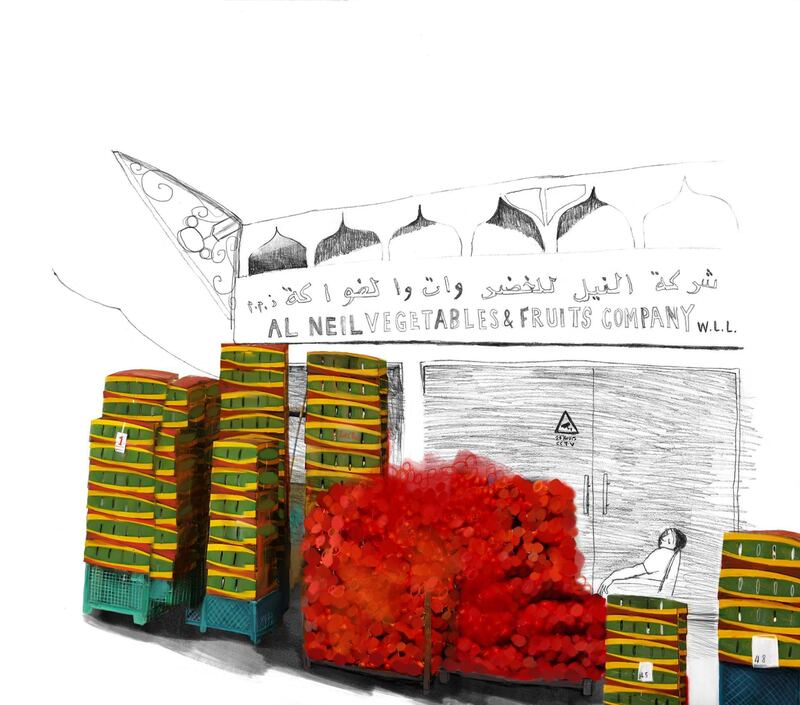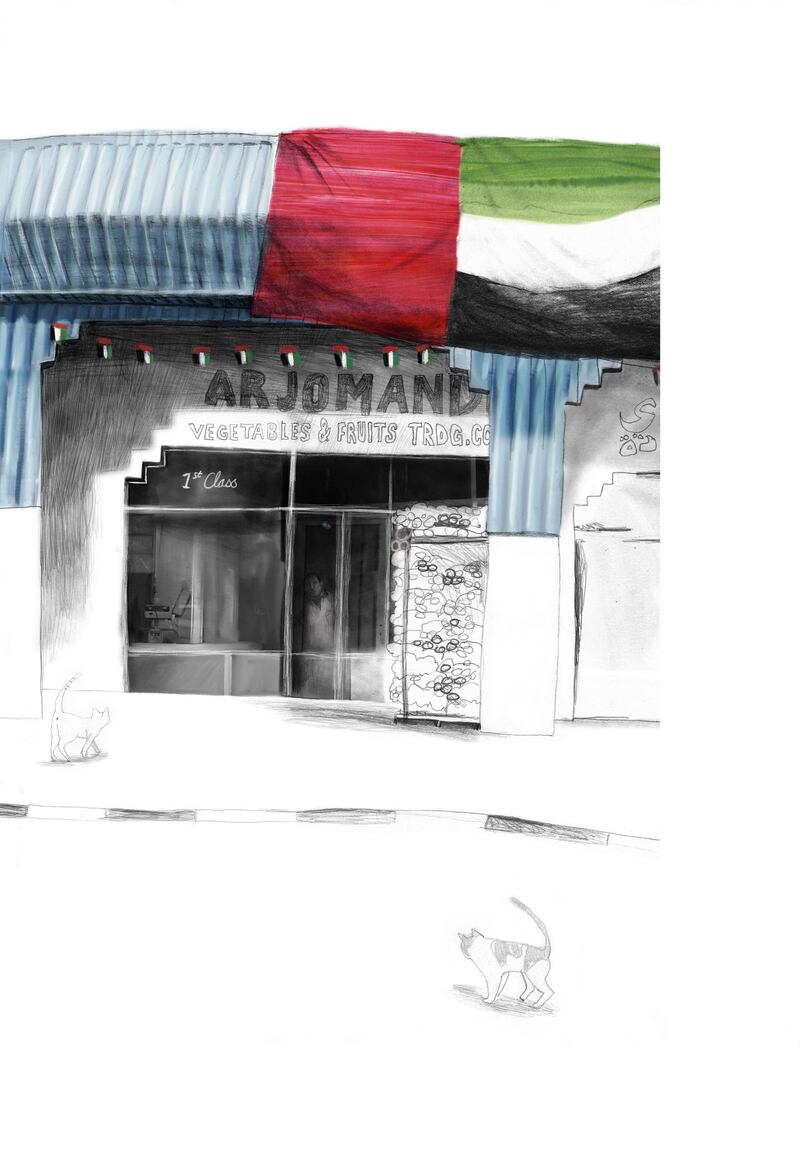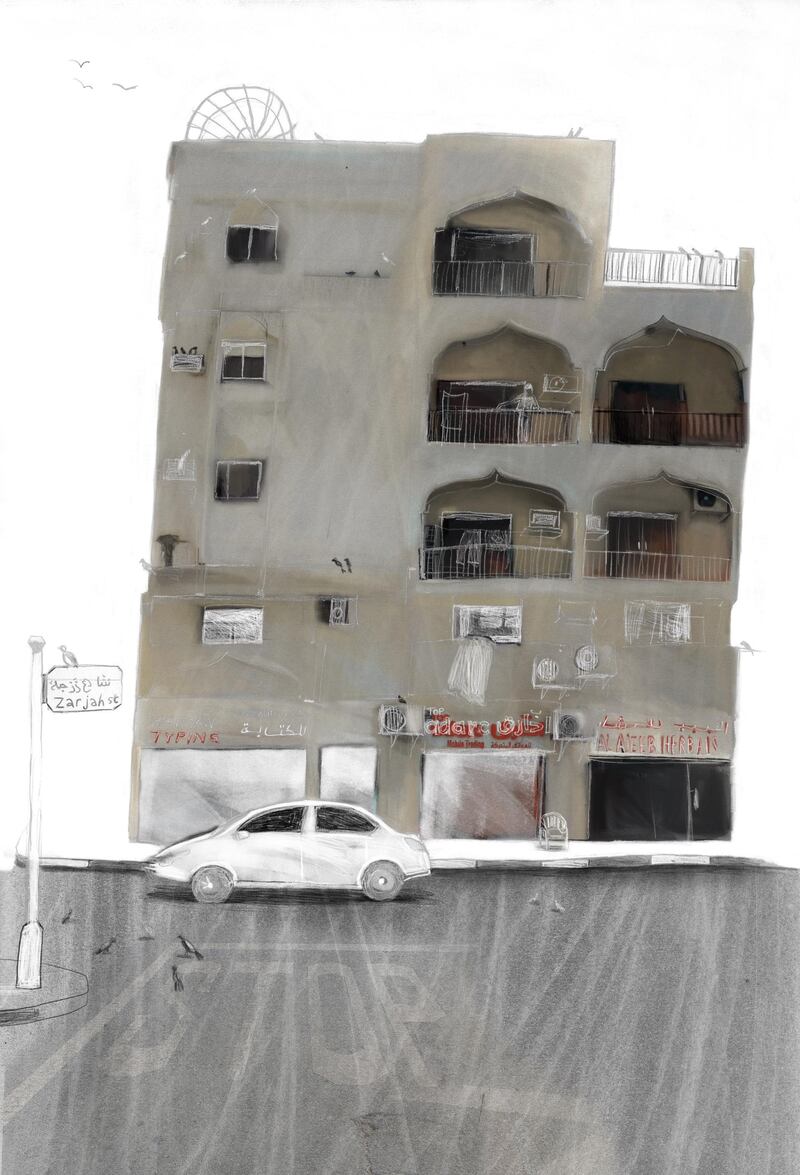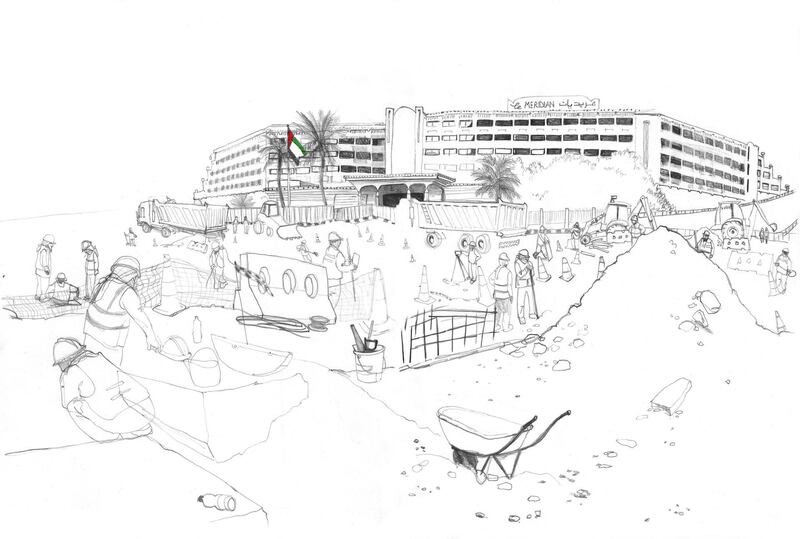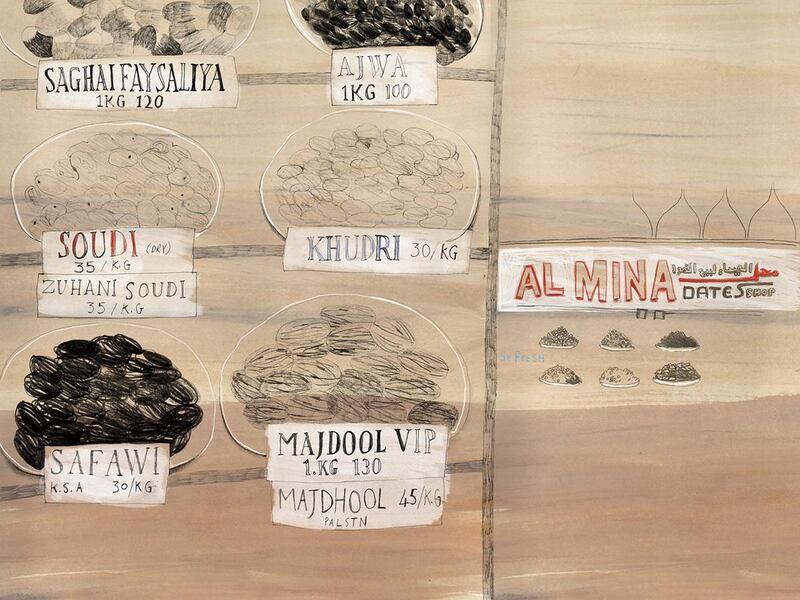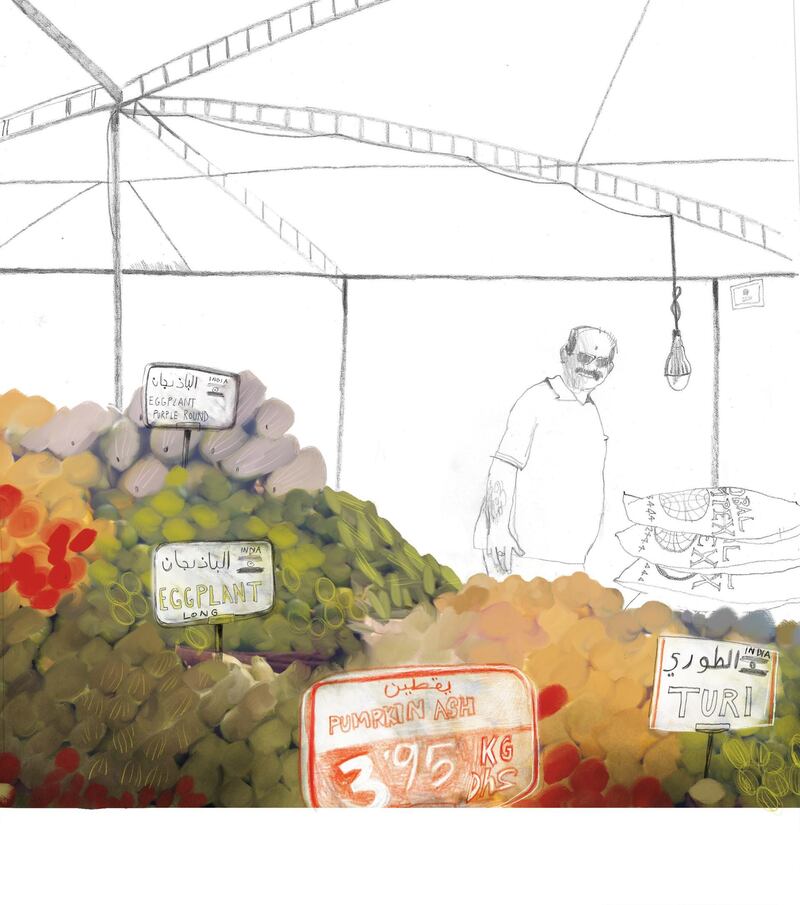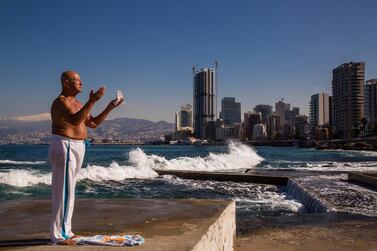Cath Donaldson has been living in Abu Dhabi for four years, but until recently, she felt as if she didn't really "know" the city.
It's a familiar tale. Many arrive and quickly get swept up in a life of brunches and beach clubs. A quick online search for "Abu Dhabi" shows more than 200 images of skyscrapers, malls and whatever else before a different perspective – the small shops and day-to-day life of Downtown – emerges.
And so, as part of her MA in illustration, Donaldson set out to record with pencils and paints another side to Abu Dhabi. “I wanted to challenge some of the misconceptions about the place,” she says. “It was about me exploring the city.”
'Neighbourhood Abu Dhabi'
The result is Neighbourhood Abu Dhabi, a gorgeous collection of sketches and paintings that celebrate the everyday: market traders selling fruit and veg, kids hanging around outside a fast-food joint, labourers on the bus. Donaldson has also included a selection of the rough drawings from her sketchbooks, many of which she completed in just a few seconds, in order to capture a specific moment in time. "Most drawings were swiftly done," she says. "I found that the longer I spent on an image, the less life it had."
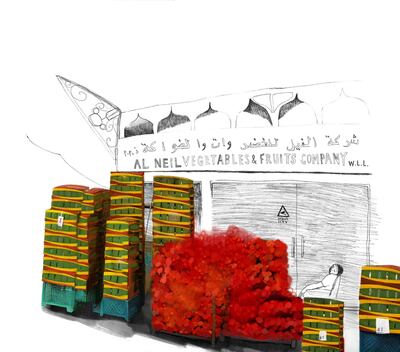
These are often accompanied by hurriedly jotted-down captions, what Donaldson calls her “anthropological field notes”. “Sofas and chairs are recycled and used as meeting places outside” or, “Men sweep up all the time. There is nothing on the floor.”
Flicking through Neighbourhood Abu Dhabi is like witnessing a whole new city awakening. There is a buzz – a sense of hustle and bustle – on every page. "Often it would take the same amount of time for me to look at a line as to draw it," says Donaldson, who has taught graphic design and illustration at college and university level. "But this puts the viewer in the same place that I was.
“The project is all about the process of illustration, rather than a final pretty picture. That was actually quite hard because you want people to go, ‘That’s really good,’ but actually sketchbooks don’t look like that at all, they’re really messy. It’s about seeing the process.”
Donaldson began the project, which took nearly a year, by attempting to map the areas of Abu Dhabi she wanted to focus her project around: the markets of Al Mina; Hamdan (roughly the blocks between 5th and 7th street); and Al Zahiyah, or the Tourist Club Area. What she discovered while walking around these places, however, is that they are almost impossible to map in the conventional sense. The city is demarcated, less by street names, than places and landmarks.
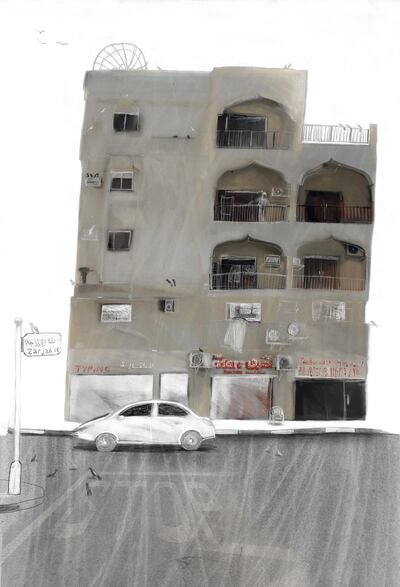
"There are no names on Google Maps and older maps carry whichever name was used at the time," writes Donaldson in the introduction to Neighbourhood Abu Dhabi. "An address often finishes with a landmark – the Hot Bread building, Tanker Mai, The Eldorado, the Pink shops, and it doesn't matter if they no longer exist.
"The city is still young and has grown quickly, unrecognisable now from its first paved road in 1966. It is no wonder that many long-term residents map the place with their collective memories." As a result, neighbourhoods have acquired a malleable quality, spreading organically in tune with the people living there, rather than the will of developers. And given that 80 per cent of people here are temporary residents, Donaldson explains, she wanted to consider "how this diverse population made sense of place".
'It's a relationship'
It was only when Donaldson started drawing, however, that Abu Dhabi and the people who live here really came alive. It was as if the simple act of documentation – of taking an interest – pulled people towards her, suddenly eager to find out about the project and to share their stories. “When you’re drawing people, it’s a relationship that you form with them,” she says. “With a camera, you ‘take’ a photograph and that’s not a relationship.”
Donaldson recalls constantly being invited in to people’s shops for refreshment and to cool off. On one page of a sketchbook, she writes about an encounter with a Pakistani man: “He brings me an apple and then goes to Baqala and buys me water and apple juice. We don’t share a language but his kindness is overwhelming.”
Sometimes, an unremarkable day would take an extraordinary turn. On one occasion, while sketching a building site in front of Le Meridien hotel, Donaldson was beckoned over by an Emirati man. Determined to provide her with a better vantage point, he asked the construction workers to build an elevated seat out of breeze blocks.
"You know this hotel?" he asked Donaldson. "Queen Elizabeth opened it. You know Queen Elizabeth the two? She is my Aunty, you know." Donaldson later discovered that this kind, excitable man was, in fact, a high-ranking government official. "He probably is important enough to have been with the Queen when she was there in 1979," she says with a laugh.
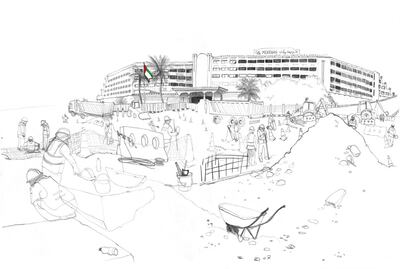
Donaldson did occasionally encounter moments of uneasiness from her subjects. She was aware of the potentially exploitative nature of what she was doing and would sometimes decide to draw from a distance. There was a particular bakery she wanted to sketch, but the owner was initially not prepared to participate. So instead, she decided to draw the shop next door. "By the end of the week, the bakers were waving and I was able to draw them," she says.
The result is one of the most striking drawings in the book, a loose pencil sketch invigorated by the fuzzy green and red lighting of the sign above the shop. Inside, two men sit cross-legged, kneading dough. The picture has a quiet, almost meditative quality.
What is most exciting about Neighbourhood Abu Dhabi is that although it shows us an Abu Dhabi we might feel unfamiliar with, it really is a snapshot of the city as it is today. There is a pleasing contrast between seeing something both strange and contemporary. And it lends a permanence to the place at odds with the changing skyline and transient society. "Until I did this project, I didn't feel that this was my home," says Donaldson. "But I do now."
Cath Donaldson will be at the Abu Dhabi International Book Fair, which runs from April 24-30. For more information about Neighbourhood Abu Dhabi, visit www.cathdonaldson.co.uk
